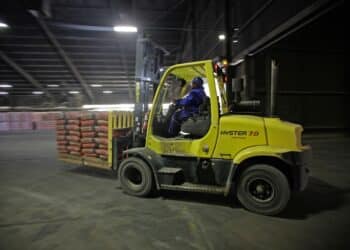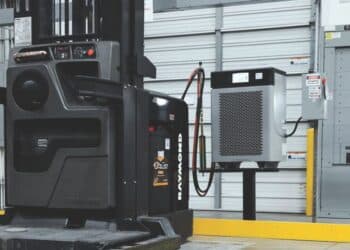Equipment lenders seize opportunities in materials handling sector
U.S. material handling finance sector could grow 73% by 2032
Equipment lenders are targeting the materials handling sector to grow their portfolios as the e-commerce boom yields a slew of borrowers and innovative equipment.
The U.S. material handling leasing and finance market was valued at $9.4 billion in 2024 and is projected to grow 73.4% to $16.3 billion by 2032, according to Verified Market Research.
The e-commerce boom has been a major catalyst for this market since the pandemic, with U.S. e-commerce sales totaling $1.2 trillion in 2024, up 8.2% from 2023 and up 109.4% from 2019, according to business-to-business platform SellersCommerce.
As logistics and distribution companies expand their operations, equipment lenders are seeing “growing demand from small and medium-sized businesses looking for flexible financing solutions to acquire the equipment they need without large upfront expenses,” Jennifer Sablowski, vice president of equipment finance at Chattanooga, Tenn.-based Transport Enterprise Leasing, told Equipment Finance News.
“As some banks have scaled back their equipment financing activities, independent leasing companies like TEL have an opportunity to step in and support these customers,” she said.
Premium on innovation
Increased need for efficiency and automation is driving new material handling equipment purchases, Sablowski said.
Reflecting this, the global autonomous forklift market is projected to more than double to $13.6 billion in 2034 from $5.2 billion in 2025, according to Market Research Future.
Innovative machines equipped with autonomous technology help warehouse operators address “growing labor constraints, demand volatility, multichannel distribution and storage capacity challenges while more effectively utilizing equipment with limited resources,” Jeff Potuznik, U.S. sales manager for construction, transportation and industrial units at global equipment financier DLL, told EFN.
“All surveys predict a high rate of adoption on some form of warehouse automation,” he said.
Moreover, the global warehouse equipment market is seeing a “major shift toward sustainability,” with electric forklifts becoming highly sought after, Potuznik said. Several factors are driving this transition, he said, including:
- Manufacturers’ push to expand lithium-ion and hydrogen fuel cell offerings;
- Technology advances enabling longer battery life, faster charging capabilities and improved energy efficiency;
- Government policies and sustainability initiatives pushing businesses to reduce reliance on internal combustion forklifts; and
- Declining total cost of ownership for electric forklifts, making them more viable for small and medium-sized enterprises.
Keys to navigating economic hurdles
With new opportunities arising in the material handling sector at a time of economic uncertainty, lenders are challenged with balancing growth and risk management, Garrett Myers, executive director at Wells Fargo Vendor Finance, told EFN.
“Maintaining a diversified portfolio across industries, asset types and customer segments helps to balance portfolio risk in any one sector during times of economic volatility,” he said. “Through a disciplined approach around portfolio management, lenders can maintain underwriting consistency, which is key to dealers’ ability to service their respective markets.”
Lenders that prioritize innovation, operational efficiency and customer experience “while keeping an eye on the fundamentals will be well-positioned to seize emerging opportunities,” DLL’s Potuznik said.









